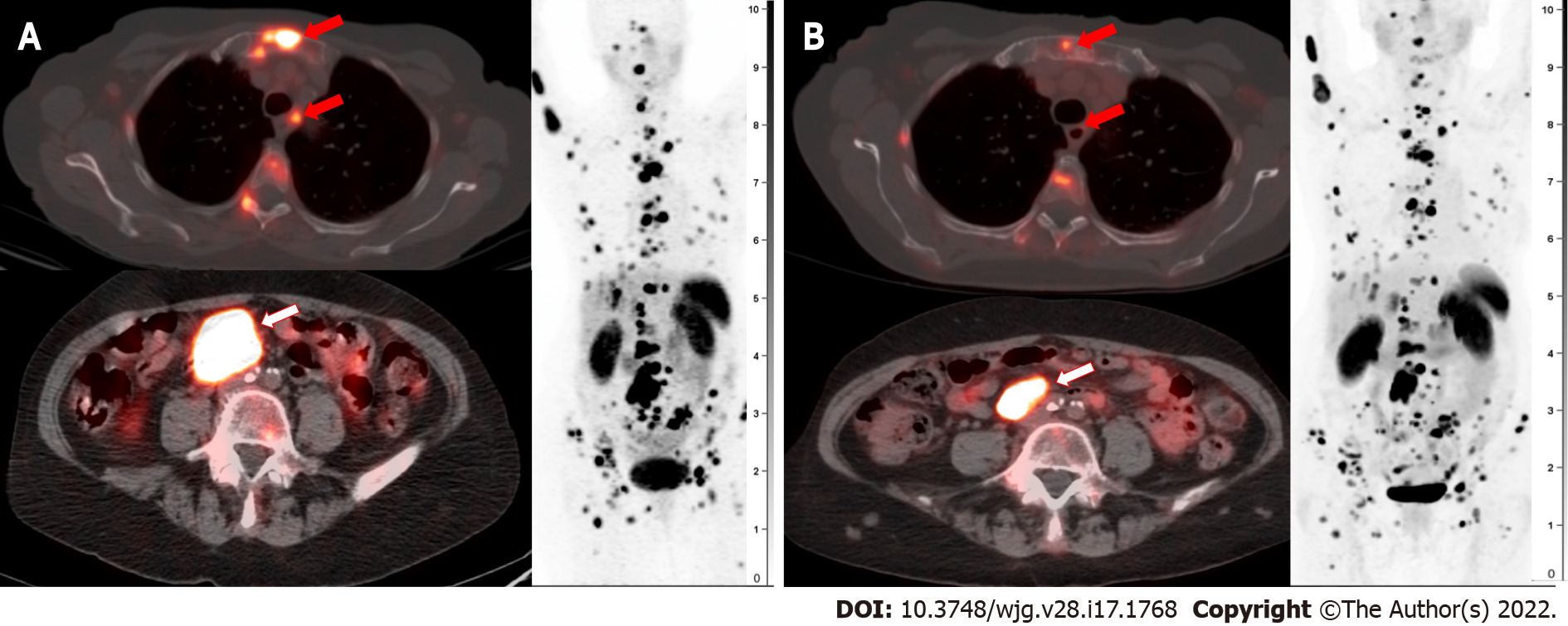Copyright
©The Author(s) 2022.
World J Gastroenterol. May 7, 2022; 28(17): 1768-1780
Published online May 7, 2022. doi: 10.3748/wjg.v28.i17.1768
Published online May 7, 2022. doi: 10.3748/wjg.v28.i17.1768
Figure 4 79 year old female with well-differentiated neuroendocrine tumors, unknown primary, treated with a complete 177Lu-DOTATATE regimen showing mild response.
177Ga-DOTATATE positron emission tomography (PET) computed tomography transaxial fusion and whole body projection PET pre-therapy and post-therapy. A: Pre-therapy; B: Post-therapy. (A; top) Sternal osseous metastases are partially improved (red arrow; B top), and a mediastinal node is resolving (red arrow; paratracheal). (Bottom row) Dominant pelvic nodal mass (A; white arrow) has decreased (B; white arrow) in size 3.3 × 2.1 (previously 3.7 × 2.6), and uptake SUVmax 39.6 (previously 46.8).
- Citation: Grey N, Silosky M, Lieu CH, Chin BB. Current status and future of targeted peptide receptor radionuclide positron emission tomography imaging and therapy of gastroenteropancreatic-neuroendocrine tumors. World J Gastroenterol 2022; 28(17): 1768-1780
- URL: https://www.wjgnet.com/1007-9327/full/v28/i17/1768.htm
- DOI: https://dx.doi.org/10.3748/wjg.v28.i17.1768









